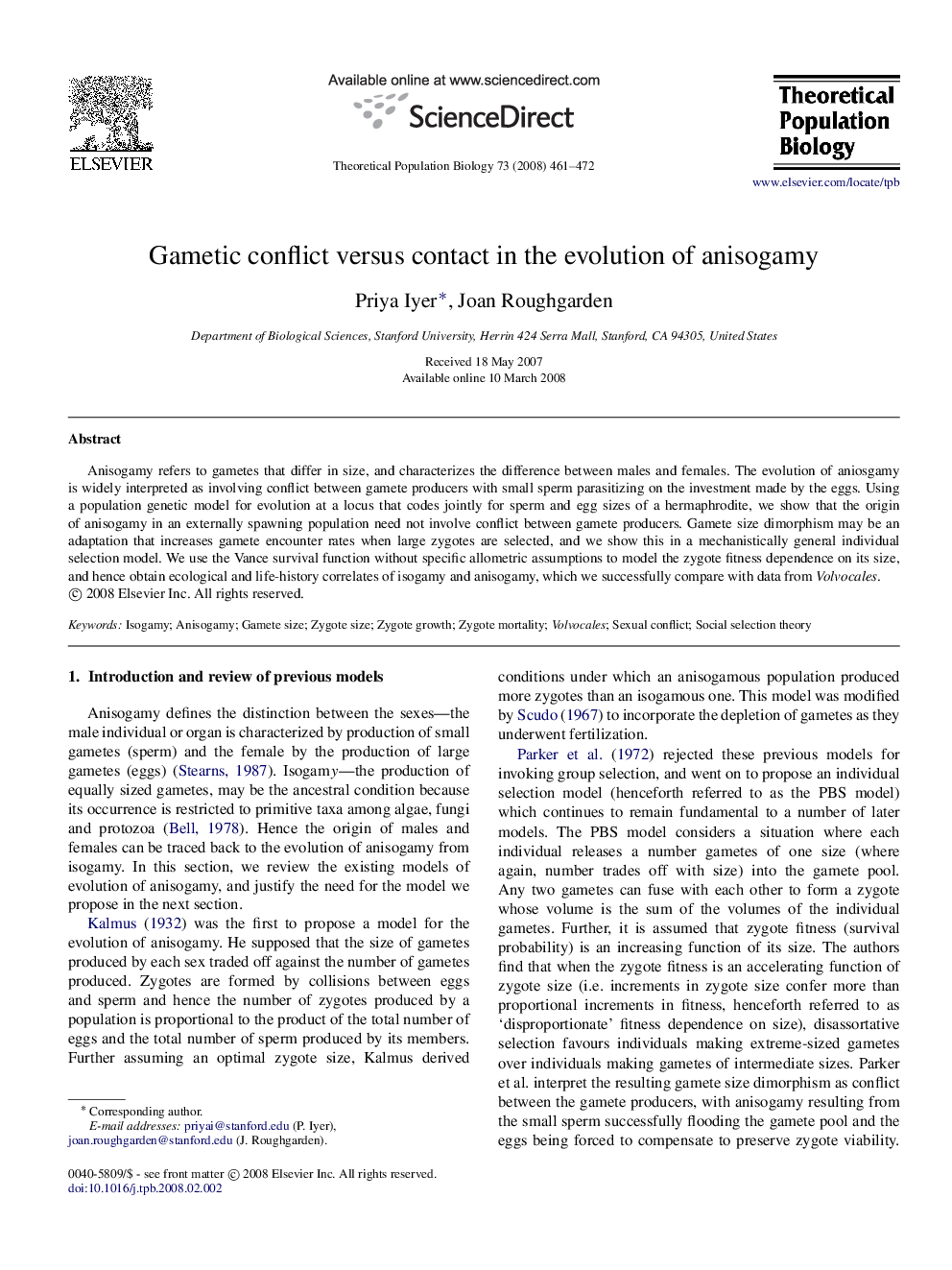| Article ID | Journal | Published Year | Pages | File Type |
|---|---|---|---|---|
| 4502716 | Theoretical Population Biology | 2008 | 12 Pages |
Abstract
Anisogamy refers to gametes that differ in size, and characterizes the difference between males and females. The evolution of aniosgamy is widely interpreted as involving conflict between gamete producers with small sperm parasitizing on the investment made by the eggs. Using a population genetic model for evolution at a locus that codes jointly for sperm and egg sizes of a hermaphrodite, we show that the origin of anisogamy in an externally spawning population need not involve conflict between gamete producers. Gamete size dimorphism may be an adaptation that increases gamete encounter rates when large zygotes are selected, and we show this in a mechanistically general individual selection model. We use the Vance survival function without specific allometric assumptions to model the zygote fitness dependence on its size, and hence obtain ecological and life-history correlates of isogamy and anisogamy, which we successfully compare with data from Volvocales.
Related Topics
Life Sciences
Agricultural and Biological Sciences
Agricultural and Biological Sciences (General)
Authors
Priya Iyer, Joan Roughgarden,
